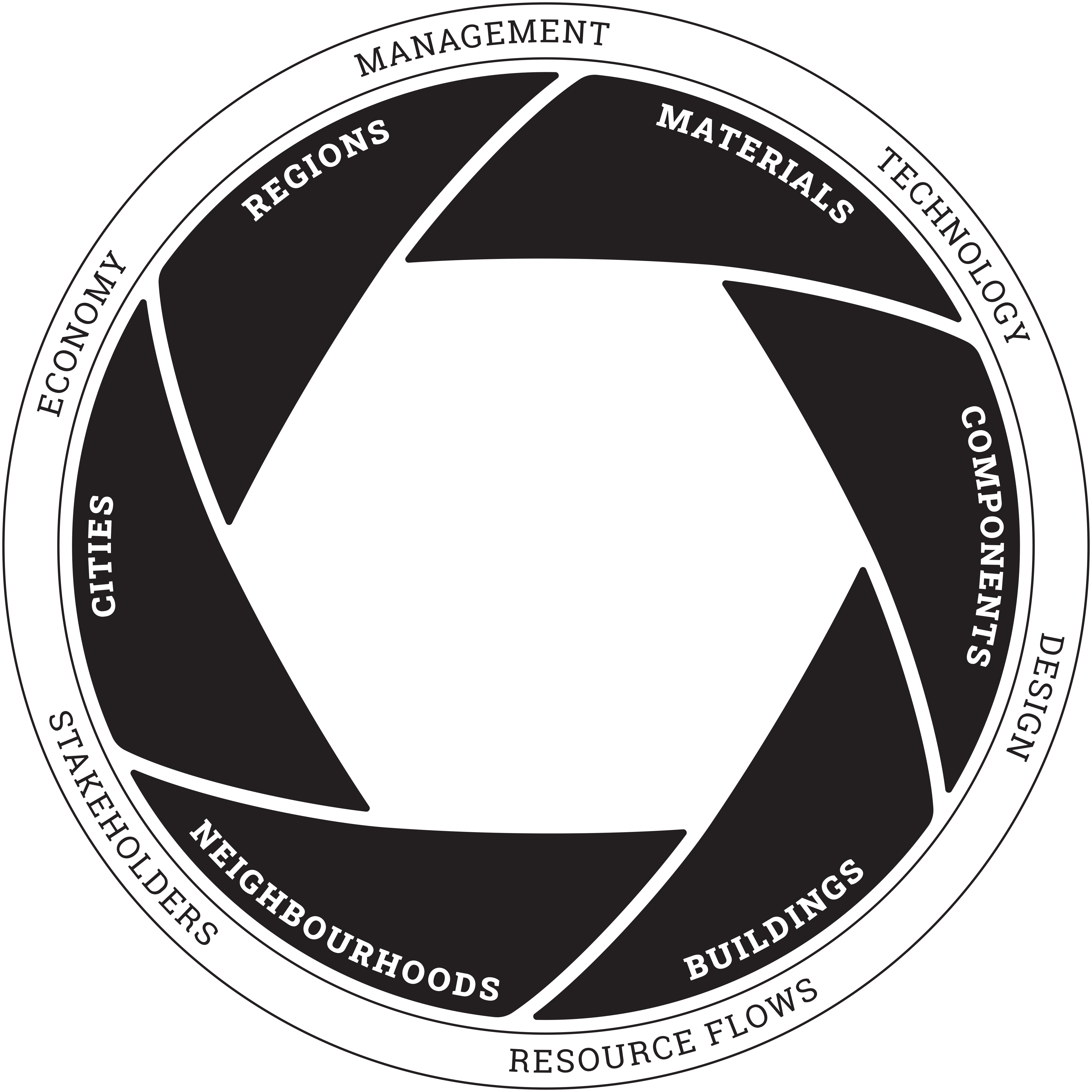Scale Matters
The Circular Built Environment Hub was established in 2017 with the aim to promote the development and exchange of knowledge towards a circular built environment, enabling the design of future buildings, cities and infrastructures. Scoping out the activities of TU Delft’s Faculty of Architecture and the Built Environment related to ‘circularity’ in all departments allowed for a parallel reading of how this topic is currently entangled in the built environment across scales. This in turn led to the structured to a CBE Definition and the CBE "Scales to Aspects" model, linking the multi-scale and multidisciplinary ongoing research to key themes.
The draft definition reads:
"The Circular Built Environment (CBE) is a system designed for closing resource loops at different spatial-temporal levels by transitioning cultural, environmental, economic & social values towards a sustainable way of living (thus enabling society to live within the planetary boundaries)"

The "Scales to Aspects" model depicts the systemic character of circularity in a single visual, starting from Materials and Components, the base ingredients of buildings, to Buildings as assemblies of large amounts of building products, materials and components, and how they relate to circular performance. One step up, Neighborhood scale represents how circularity currently manifests in specific areas or districts. Cities scale explores the most important resource flows that enter, circulate and leave the urban environment every day. Finally, Regional scale refers to the characteristics of the urban metabolism and the importance to investigate economic activities to identify the flows and stocks of materials, products and waste.
As the 'Scales to Aspects" model indicates, these scale levels are surrounded by interrelated aspects that are deemed essential to achieve a circular transition: these include – but are not limited to – technological innovations, new design approaches, and innovative management models. Aligning solutions with economic incentives is also a key element for implementing, and widely disseminating, the circular approach, and so is mapping and regulating the resource flows per scale. Last but not least, the societal dimension of a circular built environment is included, since the transition affects and is affected by multiple stakeholders and society as a whole. As implied by the lens metaphor the CBE diagram was based on, the focus of the interlocking scales aims at the circular built environment, whereas the outer ring provides the field depth.